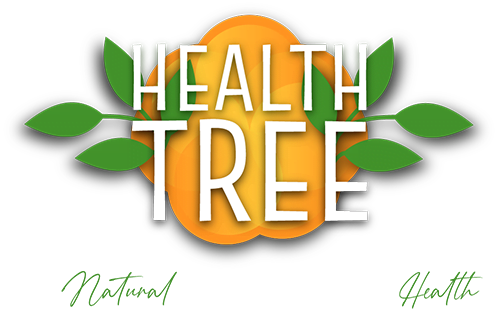There are a lot of natural sweeteners that you can use as substitutes for more harmful processed sugars. We want to look at some alternatives to the sugar that has permeated the Western diet and that can be used to counter the massive amounts of sugar we often consume. Let’s look at not only the advantages of these natural sweeteners but also the issues some of them present.
There are lots of reasons to choose natural sweeteners over processed ones. Maybe you are tyring to lose weight or are battling with diabetes. Whatever the case, processed sugar is one of the biggest culprits for obesity, heart disease and poor overall health in the world today.
Sugar of any kind can increase your inulin levels and fill your liver with carbohydrates. A high GI, or glycemic index, is a danger to any diabetic. The glycemic index for any given person is identified as as number between zero and one hundred. It indicates how much carbohydrates the food contains and how high it will raise blood sugar levels. A high GI food will increase blood sugar levels dramatically, while low GI foods will take longer to introduce the sugar into the blood.
Fructose has a low GI, but fructose may (according to new scientific research) be responsible for storing sugar as fat inside the body. That could also cause it to damage the liver and create insulin resistance.
If you are looking for the right natural sweetener to use when you need to bake or sweeten something, consider both the fructose level and the GI. You should keep in mind that a food’s GI level is potentially intertwined with the kind of food you are consuming, and how it affects you may depend on the food you are eating as much as it does the GI level. One example of this would be eating dark chocolate with nuts. The sweet part of the snack can balance out the rest and create a negligible sugar impact.
Let’s look now at some other best natural sweeteners to use. Here are some of our top chocies.
Honey – Most people think of honey first when the consider sugar alternatives.
- Advantages
- It has been valued for centuries as a source of energy.
- Floral honey has low GI, relatively speaking.
- Raw honey retains a lot of nutrients and can have more health benefits.
- Disadvantages
- Vegans won’t be able to use it.
Agave – Did you know that tequila comes from agave? Agave can naturally sweeten in the same way as honey does, but it can contain a lot of fructose and it is not often manufactured in a healthy way.
- Advantages
- This sweetener has been used for generations as a salve and a sugar substitute.
- It is all natural and has a low GI.
- Disadvantages
- Agave, when you buy certain brands, can be very processed. It may not be any healthier than regular sugar, and you should look for raw or dark agave for something that still has most of it nutrients and is healthier for you.
- It may contain a lot of fructose, and it has come under fire for that problem.
Coconut Sugar – Coconut products have hit store shelves in droves recently. People are starting to discover all the benefits that coconut oil, coconut soap and other coconut products can provide. Some studies have shown that coconut sugar may have a lower GI than table sugar, but these results have not been widely confirmed yet. GI can actually vary from one person to the next, so the reports would need to be substantiated before they can be confirmed and used as fact in support of coconut sugar.
- Advantages
- It may have a lower GI than table sugar.
- It is packed with nutrients like amino acids and minerals.
- It has inulin, which has been shown to decrease the body’s absorption of glucose.
- Many coconut sugar brands are ethically produced.
- It is also environmentally sustainable.
- Disadvantages
- An accurate GI has not yet been determined.
Rice Malt Syrup – Rice malt syrup is recommended by health experts as a sugar alternative. It contains no fructose, which is great for those struggling with high blood sugar and obesity.
- Advantages
- it contains no fructose.
- It allows sugar to release very slowly.
- It is beneficial to the liver.
- Disadvantages
- There may be small amounts of arsenic in this sugar substitute, according to some tests.
Medjool Dates – Medjool dates are an integral part of a raw food diet, and they have been used for many centuries as a nutrition supplement.
- Advantages
- This raw food has tons of nutrients.
- It contains lots of fibre.
- Disadvantages
- There isn’t much negative to say about Medjool dates, but any sugar needs to be consumed conservatively.
Stevia – This sweetener can be found in Paraguay, and it has become super popular over the last few years. You can buy it in its natural leafy form or in a powdered form. The powdered version can be refined or blended, and most people prefer the blended version, since raw stevia can be sickeningly sweet. When you combine it with erythritol, then it creates a powdered sugar that you can use as a one to one substitute for conventional sugar in your cooking. Of course, it’s also perfect for coffee tea and other things you would normally put sugar in. Stevia has been in use for centuries, but only recently was it refined and used on a mass scale like it is today.
- Advantages
- It has no calories.
- It has no effect on your blood sugar level.
- It is perfectly safe for diabetics to use.
- Disadvantages
- The bitter taste can take some getting used to.
- The effects of stevia as a replacement for sugar needs to be more fully researched.
It’s important to use natural sweetened in moderation, as many health experts advise. Just because they are natural, that does not mean you can start consuming a lot more sugar. Even with neutral sweeteners, if you wan to lose weight, the you need to cut back your sugar intake, and that’s a unanimous consensus among health experts, dieticians and fitness gurus.
How much sugar you can safely consume will depend on a few factors, such as your weight, how much exercise you get and what your fitness or weight loss goals are. In general, you want to limit yourself to about two pieces of fruit per day or the equivalent amount of sugar.
If you are not trying to lose weight, then just try to be moderate in your sugar consumption. Enjoy the occasional fruit or sweet delicacy, but try to eat unprocessed and natural foods as much as possible. If you make the foods yourself, you can control the ingredients and how much sugar goes into it. That’s always the best and healthiest option.
There are a wide range of natural sweeteners that you can use, so just experiment with some of them and see what works best for you.
It’s not a bad idea to keep a wide range of natural sweeteners on hand. That way, when you come across a recipe on the internet that calls for a natural sweetener, you will have it on hand and be ready to make whatever it is. Sometimes you can use substitutes as well, but you should know how much of a particular sweetener to use in place of another.



